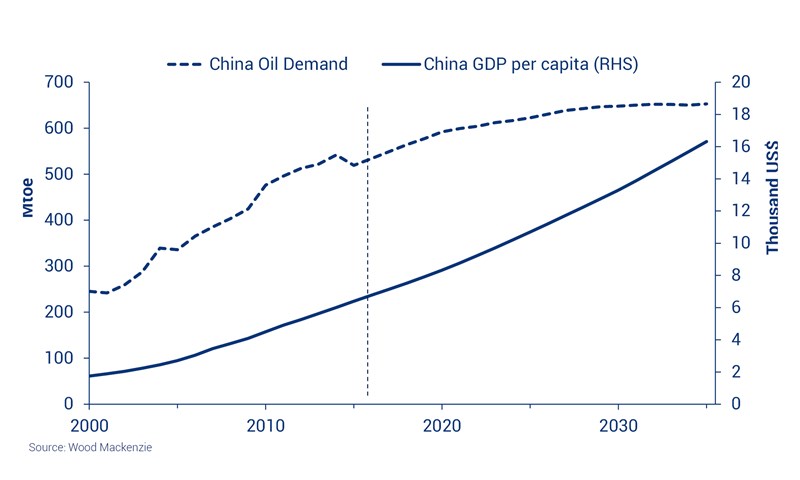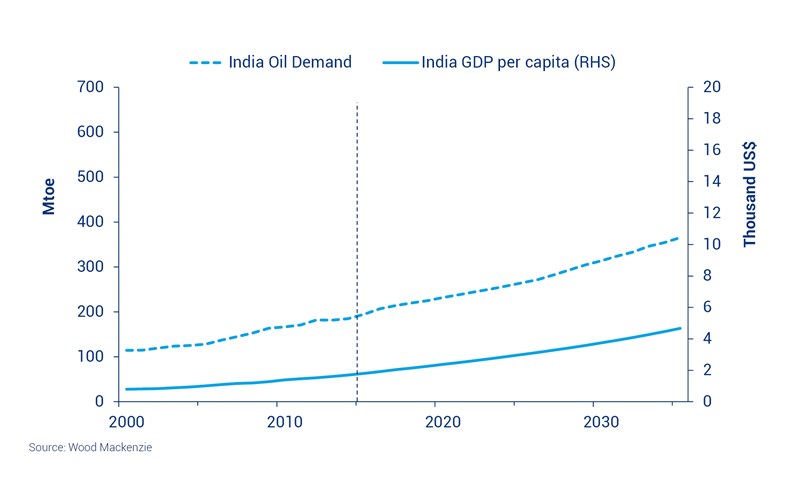Discuss your challenges with our solutions experts
Move over China. Rising incomes, population growth and industrialisation are fuelling a period of rapid, sustained growth in India's energy demand that could reshape the global scene.
India's energy demand is booming, with the country having taken the mantle of fastest demand growth from China. Its appetite will increase at an annual average of 3% from 2017 to 2035, driven by the government's bid to expand the manufacturing sector and accelerate urbanisation.
By 2035, India will also have overtaken China as the world's most populous country, creating huge demand for transport fuel, petrochemical feedstock and residential power. Its rise will be similar to the intense growth phase observed in China from 2000, but advancements in fuel efficiencies will make development far less energy intense.
An emerging convergence between oil and GDP in China
An emerging convergence between oil and GDP in China
Between now and 2035, India's oil consumption will grow by around 80%, driven by the forthcoming industrial boom, during which demand growth will outpace that of GDP per capita.
China will continue to be the world's second largest consumer of oil, using around 15 million b/d in 2035, but its exceptional pace of growth will decelerate as it transitions towards a service-based economy.
Over the next 20 years, India will also be crucial to the fortunes of coal as the development of power generation in South East Asia creates the final stronghold of global demand growth. By 2035, the need for coal in Asia Pacific (excluding China) is expected to make up nearly 35% of global demand, up from 21% in 2016.
Power demand will be met by a mix of fuels, including significant growth in nuclear and renewables generation, however, the cost-competitiveness of coal continues to give it preference. As China can no longer sustain long-term growth in coal demand, it is subject to the fortunes of electrification in a shrinking pool of Asian markets.
The outlook remains positive so far but, if India manages to meet its ambitious renewables targets through huge solar parks and small scale off-grid installations, coal's growth could be further stunted.







